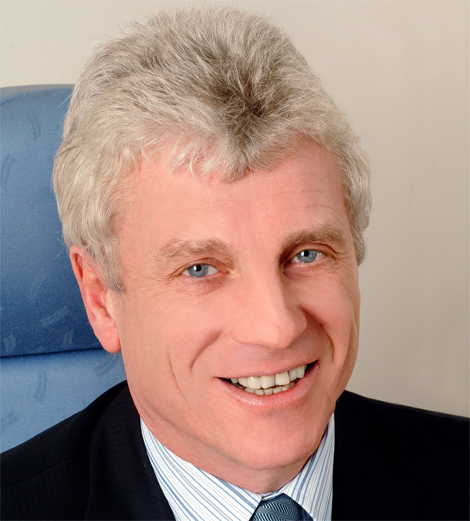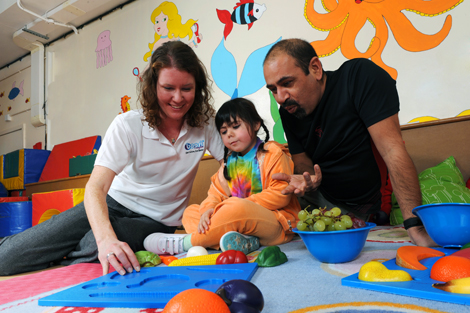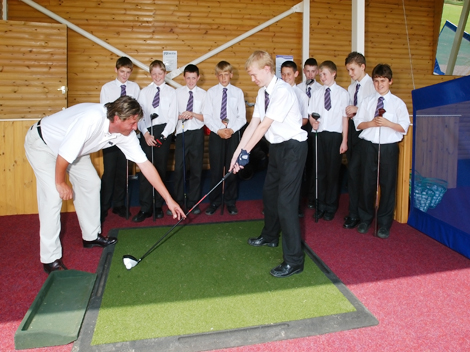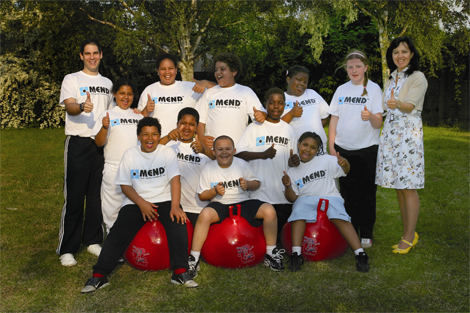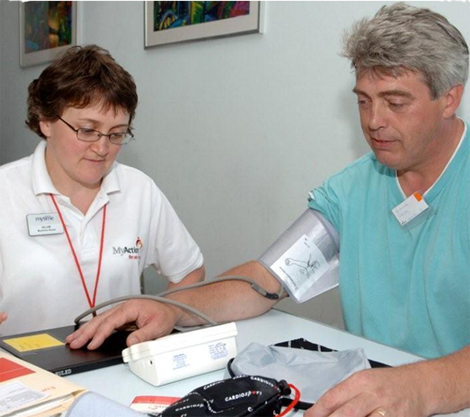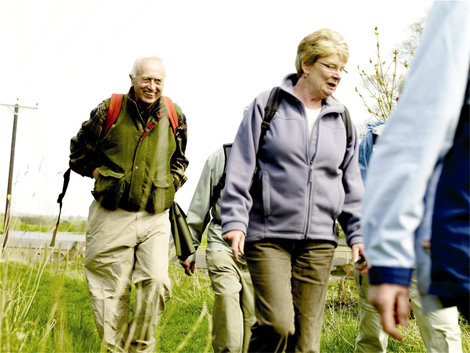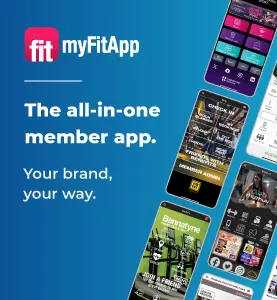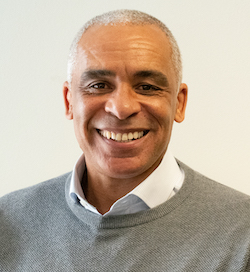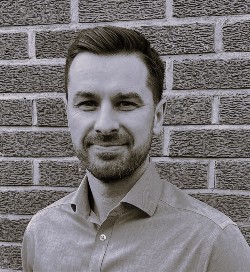I don’t want to put Mytime Active up on a pedestal, but I do believe we’re very different from other organisations in the sector,” says Steve Price, founder and CEO of the leisure trust. “Our whole ethos and way of doing things sets us apart, and it’s something we’ve carefully nurtured over time.”
The organisation – established in 2004 as Bromley Mytime but rebranded three years ago to reflect its increasingly broad geographical remit – has, in Price’s view, several key areas in which it differentiates itself. “Our model is one of a genuine social enterprise,” he explains. “We’re community-based. We’re evidence-based. We have high levels of partnership working, because we believe the societal issues we’re trying to address are too big for one organisation alone to solve. We focus on empowering people to change their lives – those values lie at the very heart of what we do. And we consistently re-invest our profits in the right areas to ensure we deliver on our agenda.”
That ongoing re-investment is a key part of the model, says Price: “Local government was never in a position to do that – it was always a case of boom and bust. New facilities would be built, but further down the line funding wouldn’t be there to re-invest and keep venues up-to-scratch. With all the financial pressures on local government, leisure wasn’t a priority and it became unsustainable – services were being disproportionately reduced each year.
“Through Mytime Active, we’ve been able to create a much more sustainable model, re-investing our profits – £16m to date – in continually improving and expanding our services. People get confused about the trust model, saying it’s not for profit. That’s totally wrong: we may be non-profit distributing, but we absolutely are about generating profit. That profit is the engine that allows us to create initiatives that can change people’s lives.
“And that very much fits with our ethos, which is not just about providing services: it’s about opportunities, life chances, and empowering people to take control.”
Investment and expansion
He continues: “In the Mytime Leisure division, our strategy of re-investment has meant improved facilities at our four main leisure centres, including new play centres, gyms, exercise studios, health consultation rooms, changing facilities, 10-pin bowling... We’ve invested £5m in the Pavilion alone. We wanted to realise the full benefits of the assets we had, already rather than expanding into new territories.
“Through the Mytime Golf division, with its 19 courses, we’re also the UK’s largest operator of pay-and-play golf. In that division, our re-investment programme has allowed us not only to improve facilities at existing venues but also to acquire new ones.
“Our aim is to reduce the barriers to participation in golf, particularly among young people, so ours are not members’ clubs – we’re very community-focused. In line with that objective, we’ve run initiatives such as our golf club amnesty: we invited anyone with an old set of clubs that was gathering dust in their garage to donate them to us. Over 1,000 people handed in their clubs, which we then refurbished. These can now be hired for free by any young people wanting to come along and play golf.
“But a major area of re-investment has been, and continues to be, our Mytime Health division: we’ve put a strong focus on growing our health services portfolio. That includes our recent acquisition of MEND, the kids’ nutrition and physical activity programme that focuses on educating the whole family.
“MEND complements our existing weight management services very well, giving even more choice to local authorities and CCGs, and has great synergy with our existing portfolio and company ethos. It also brings with it a scale that we didn’t have in our offering before: extensive research and development, an evidence base of over 55,000 adults and children MEND has helped around the world, 60 existing contracts across the UK, and research partnerships with the likes of Great Ormond Street Hospital and University College London Institute of Child Health. That sort of evidence base is invaluable in demonstrating value for money to health commissioners.
“We’re also developing licences for other organisations to operate MEND in the US, Canada and Australia, and will potentially extend this programme to other markets too. We saw the acquisition as an investment in the future of our health business.
“So our organisation has certainly expanded significantly in recent years, moving beyond leisure into golf and health, with an annual turnover of £40m. But as CEO I’ve done some very simple things: I’ve built on the strengths of the existing people and the strengths of the company, and I believe we’ve taken logical next steps rather than giant leaps in the dark.”
Partnership work
It’s clear, speaking to Price, that it’s the health division that particularly excites him at this stage: “Health is the real growth sector for us and a key focus going forward. Leisure is a mature market that’s already well covered, while health is an emerging opportunity.”
He continues: “Some of our health programmes are run through our own leisure centres: our HeartSmart programme, for example, for those who’ve had a heart attack or cardiac event, and our long-standing GP referral scheme, into which 56 local GP surgeries now refer. But our model is broader than that. It’s about working with community partners and stakeholders to deliver our services in the community. While Mytime Leisure is very much centred on the Bromley area, with leisure centres operated on behalf of the local council, Mytime Health operates across the UK.
“We currently have around 60 contracts, from Cambridgeshire to Norfolk and Waveney to several London boroughs. Outside of England, we operate the MEND contracts in Wales and Scotland. And I think, with the reforms that are going on in the NHS at the moment, we're very well positioned to grow further. It’s about looking at selective opportunities that fit our company ethos, values and portfolio of current services, as well as the expertise of our people – we have great skills in the organisation when it comes to community development and partnership working.
“We energise community organisations to engage and we upskill them. In fact, when we talk about re-investing, this is an important part of what we do: investing in people. As an industry, we’re very good at investing in physical assets, but nowhere near as good at developing people. You have to take people to places they never thought they would go. You have to lead and inspire them.
“This is very much our approach – upskilling the community itself – and as a result, our offering isn’t really about direct service provision. The leisure centres clearly are, but much of our outreach work is about community engagement, identifying partners who are much closer to the community than we are – to the different demographic and ethnic groups we need to reach to address health inequalities – and therefore much better placed to deliver programmes effectively.”
Seamless delivery
Mytime’s Health Trainer programme is one example of this community partnership approach. The scheme sees individuals recruited from within the community and trained to motivate people to change their behaviour and lifestyles. This includes supporting community members to stop smoking, lose weight or increase levels of physical activity. Health trainers are trained to assist clients on a one-to-one or group basis, assessing their health and lifestyle risks. “Health trainers essentially do health checks – interviewing people, often in GP surgeries,” explains Price. “They take the load off the GP.”
The initiative has already been rolled out in areas such as Norfolk and Waveney, Portsmouth and Hampshire, the West Midlands, Hammersmith and Fulham, and Cambridgeshire. Cambridgeshire NHS commissioned the service in November 2009, with impressive results: Mytime Health now works with 15 GPs across Cambridgeshire, with over 5,500 referrals to the service to date. There’s an average weight loss of 2.3kg per participant, physical activity has increased by an average of 69 minutes a week, General Health Scores have increased by an average of 14 per cent – and perhaps most significantly, 82 per cent of patients have achieved their primary goal.
“I think there’s a great opportunity for the leisure sector to engage much more in this area,” Price adds. “There’s a degree of convergence between health and leisure, and roughly it’s called wellbeing. I believe there are great opportunities to improve participation in physical activity via health benefit messages. However, it can be hard work and there’s a cost associated with it, so there’s a question as to whether the fitness industry in general would see merit in this approach.”
Mytime Active, however, has very much embraced this opportunity. “There needs to be an integrated approach and I believe we’re well placed to offer this,” explains Price. “My view is that, at the moment, people get bounced around the NHS: if someone’s had a heart attack or cardiac event, the likelihood is they’ve smoked or continue to smoke, have a poor diet and are overweight, and don’t participate in regular physical activity. They therefore need access to a range of different services to address the root causes of their heart problems – dieticians, nutritionists, smoking cessation schemes, physical activity specialists, CVD nurses – but so often these are delivered in silos, through separate clinics.
“If you were to look through the patient’s eyes, which is the best place to start, all those services should be offered in one venue. That’s what we’re trying to do, and that’s why it’s important to get out into community settings – schools, GP surgeries, village halls, leisure centres – with our programmes. We need to be wherever the people are who need those services.
“Our programmes range from smoking cessation to exercise referral, adult and kids’ weight management to the Health Trainer scheme. We’ve also developed a diabetes programme and are looking at offering something in the area of sexual health, as there’s a high demand for this.
“The recent changes in the public health structure should also help here: we need to build relationships with the new commissioners, but I believe local authorities are much better placed to integrate leisure with social care, health services and so on. Nevertheless, they still face tough financial decisions, so we always come back to the same issue: evidence and value for money. We need to demonstrate that it would be foolhardy to cut back on the programmes we’re running.
“We’re currently looking at investing a further £100,000 in a bespoke software system that will guide patients through our programmes, providing the evidence we need to demonstrate that they represent excellent value for money.”
Cradle to grave
Price continues: “The other very successful initiative we run – and I’m going back into leisure here – is Primetime, which is a programme for the over-60s. We have a team of 24 volunteers, all dressed in lime green so you can’t miss them when you walk into our leisure centres, whose role it is to organise activities for our older members. They do lots of social activities – they’d been to the theatre when I last spoke to them, and were going off to do a belly dancing class.
“The volunteers are all older themselves, so the members may even know them personally – at the very least, the word spreads through local friendship groups. That encourages people who might not otherwise come to our centres to give it a go. Again, it’s finding the people who are best placed to tap into networks that already exist.
“We run 64 dedicated Primetime sessions a week across eight venues, and in a typical month we’ll get around 30,000 visits from people aged over 60.”
At the other end of the age spectrum, Mytime’s ArtsTrain initiatives target young people: “It’s not a traditional leisure offering – it’s more focused on engaging young people through activities like song-writing and music production. It’s designed to help young people gain skills and qualifications that will make them more employable.”
Strong foundations
“Our over-arching vision is to change people’s lives,” concludes Price. “I believe the whole ethos of our organisation is structured around delivering that. However, there’s no room for complacency, and we’ll continue to look selectively at opportunities to reach even further into communities around the UK.
“Looking forward, we will continue to expand our health offering nationally, further grow our golf portfolio, and maximise the value of our existing leisure assets through continual re-investment. So we certainly have strong ambitions as a business. But as I said before, none of this is a case of giant strides in the dark. We’re simply building on what we already do well.”








